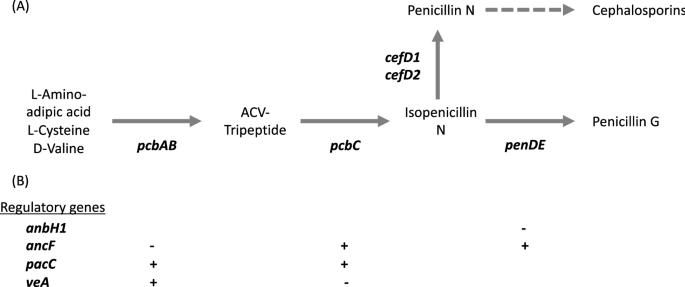
- Select a language for the TTS:
- UK English Female
- UK English Male
- US English Female
- US English Male
- Australian Female
- Australian Male
- Language selected: (auto detect) - EN
Play all audios:
WASHINGTON — In a sign that the American cocaine epidemic may have peaked, the nation’s highest-ranking health official announced Monday that the number of cocaine-related cases reaching
hospital emergency rooms has declined sharply for the first time in a decade. The plunge of 22%, recorded by the federal Drug Abuse Warning Network, provides the strongest indication to date
that even heavy users of cocaine may be turning away from the drug in significant numbers. “We are making significant headway in our efforts to establish a drug-free America,” said Health
and Human Services Secretary Louis W. Sullivan, who made the announcement in a speech at a drug policy conference here. The emergency room statistics are regarded as perhaps the most
important indicator of hard-core drug abuse because they monitor the overdoses and drug-related violence that are among the most tangible consequences of chronic cocaine addiction. The
turnaround comes after an extraordinary decade in which cocaine emergencies at U.S. hospitals increased 15-fold, and suggests an end to a four-year period in which cocaine addiction spread
even as the overall number of Americans who used the drug began to decline. A top official at the National Institute on Drug Abuse cautioned that the first-time decline, recorded in the last
three months of 1989, does not yet constitute a trend. But he noted that the drop-off in cocaine emergencies occurred virtually nationwide and was consistent with other indications
suggesting that the worst of the epidemic has passed. “It’s not due to some fluke where just one city has dropped off the map,” said Dr. Edgar Adams, chief of epidemiology at the institute.
“This is really encouraging.” A separate, preliminary study of cocaine-related deaths based on the reports of medical examiners across the country also recorded the first decrease in many
years, Sullivan said. The release of the data by the Administration appeared designed in part to counter the damaging effect of a report last week by Senate Judiciary Committee Chairman
Joseph R. Biden Jr. of Delaware, who contended that the federal government had vastly underestimated the extent of cocaine addiction in the United States. That study drew no conclusion about
whether the outlook had improved under the Bush Administration and Biden said later that he believed cocaine addiction had reached a plateau. But Administration officials--wounded by the
senator’s criticism--nevertheless sought Monday to contrast the new evidence with the Biden study. “The results I am reporting today are not smoke-and-mirrors projections, assumptions,
extrapolations or hunches, like some you’ve heard recently,” Sullivan said at the conference of state and local anti-drug officials. “Today’s results are hard-and-fast data, reflecting
actual, reported incidents of cocaine-related medical emergencies.” Aides to Biden, a Democratic leader on drug policy issues, did not respond to requests for comment on the new statistics.
But Rep. Charles B. Rangel (D-N.Y.), chairman of the Select House Committee on Narcotics Abuse and Control, said that the report could be misleading because it provides “no indication of how
many don’t reach the hospitals.” Although the congressman’s office in the past had distributed Drug Abuse Warning Network reports to substantiate claims that the scope of cocaine addiction
was rising, Rangel said in an interview: “I do not think that the number of cases that are reported in emergency rooms have any relationship at all with the number of cocaine addicts.”
William J. Bennett, director of the White House Office of National Drug Control Policy and a target of Democratic criticism, made no official comment about the new statistics. But in an
appearance at the conference earlier Monday, he urged reporters to pay close attention to the Sullivan speech. “What we believe is that (cocaine addiction) is still a very serious problem,”
Bennett said at a news conference. But asked whether the problem is worsening, he said: “I guess we don’t think that’s true.” The new hospital statistics show that cocaine-related emergency
room admissions declined by 22% in the last three months of 1989, dropping from 11,094 in the third quarter of the year to 8,627 in the final quarter. Among the cities registering sharp
declines were Los Angeles, whose quarterly fall-off from 1,016 to 745 marked a 27% plunge, and New York, with a 26% decline. Among 21 cities included in the survey, only Atlanta and Miami
failed to show significant reductions. The figures, based on reports from 431 hospitals, measure the number of times cocaine is mentioned as a factor in contributing to an emergency room
admission. Among those included in the counts are victims of overdose, drug-related crime or anxiety attacks resulting from cocaine use. The Drug Abuse Warning Network figures had suggested
that heavy cocaine use reached a plateau beginning in late 1988, with the quarterly number of emergency room admissions remaining constant near 11,000 until the third-quarter of 1989. But
Adams, the chief epidemiologist at the National Institute on Drug Abuse, said that the 22% decline in the final quarter of the year represents the first significant decline since cocaine use
began to boom in late 1979, when cocaine-related medical emergencies were still almost unknown. Other recent studies suggesting that cocaine addiction has at least reached a plateau include
evidence that the number of arrestees testing positive for drugs has begun to decline in most cities. And in a separate indication of progress in reducing availability of the drug,
Administration officials said Monday that there are new isolated reports of increases in the price of cocaine in some parts of the United States. In the most dramatic case, Orange County
Sheriff Brad Gates told federal anti-drug officials that the average price of a kilogram of cocaine in the county has jumped in the last two months by some 33%, from $15,000 to $20,000. At
the same time, he said, average purity of the drug has declined from about 80% to 18%. “It shows that we’re hurting them,” Gates said in an interview. MORE TO READ








